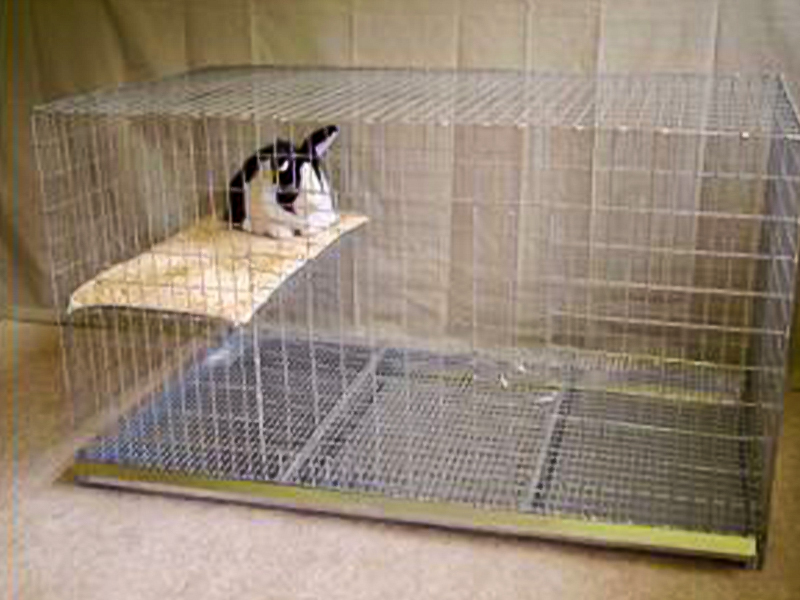Housing for Rabbits
What to Expect Living with a Rabbit
This page outlines what to expect living with a rabbit. Rabbits are wonderful companion pets who bring lots of fun, social enrichment to the home. They can get along great with cats and dogs if introduced properly. They’re also destructive little chewing/digging machines. To ensure a successful bunny home life, make sure you prepare their home before you get them. Some homes may not be equipped to have a rabbit. That’s okay. It’s better for people and the rabbits if you come to that conclusion before bringing a rabbit home.
Here’s what to expect when living with a rabbit, along with some of our most Frequently Asked Questions.
Are Rabbits Low-Maintenance Pets? Check out this short video below!
What to Expect Living with a Rabbit
Things to Consider
BEFORE you get a rabbit
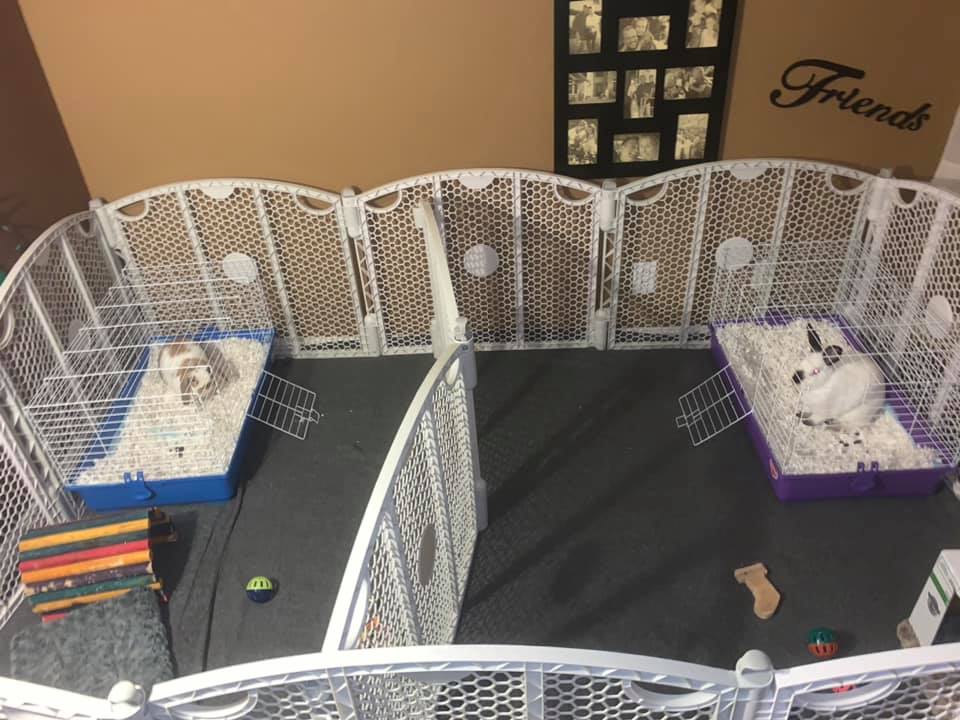
Rabbits need space
Rabbits love to run, jump, and play, every day! Make sure you have a safe and secure location in your home that your bunny can stretch his legs and play.
Learn More:
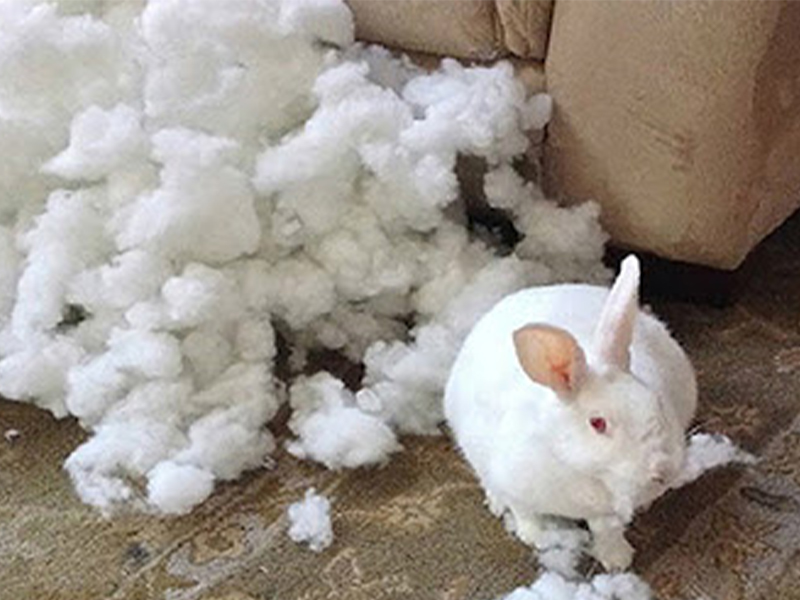
Rabbits chew & Dig
All furniture and electronic cords are in danger! Make sure to "bunny-proof" your home before you bring a rabbit home. Rabbits are like children and will get into everything.
Learn More:
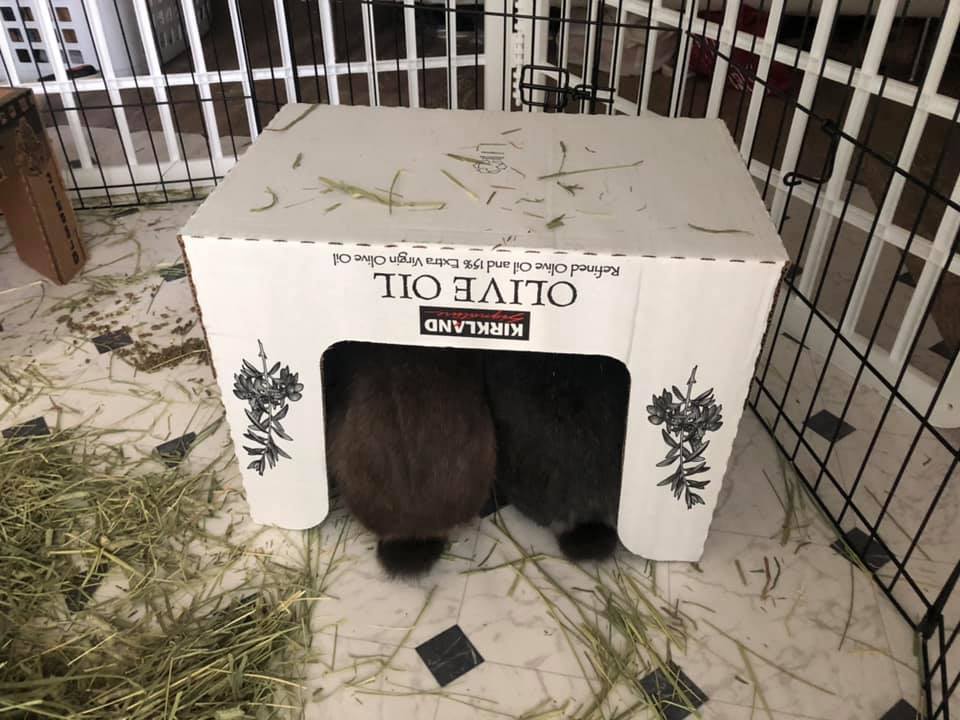
Rabbits Need a Home-Base
Rabbits need a place in their living space that is safe and secure. It doesn't have to be elaborate, a cardboard or wood box works great.
Learn More:
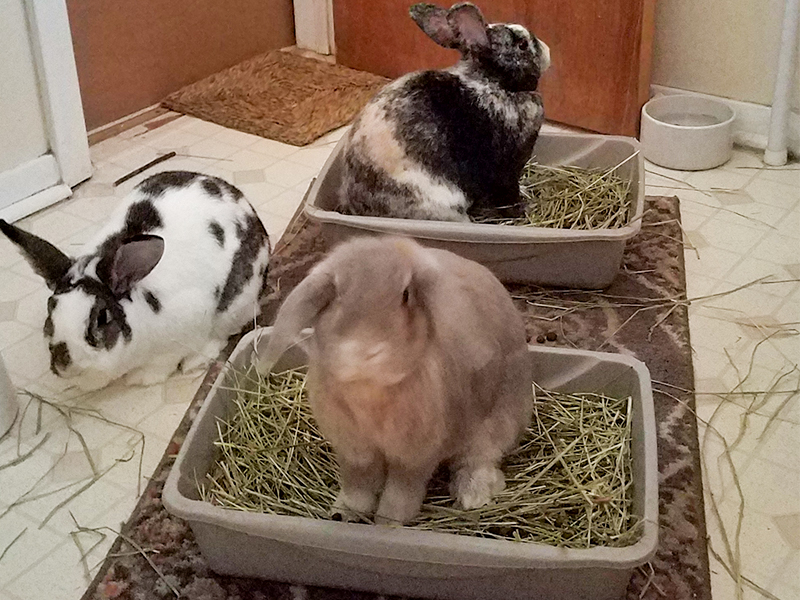
Rabbits can be litterbox trained
Rabbits are smart creatures who can be trained to use a litter box. A litterbox trained rabbit can make your house and their space a whole lot cleaner!
Learn More:
What to Expect Living with a House Rabbit
Frequently Asked Questions
A cage should be at least 4 times the size of your bunny –even more if they’re confined for a large amount of the day.
Rabbits are Crepuscular–meaning they’re most active at sunrise and sunset. That’s why you may only see your bunny lying around during the day looking like they’re sleeping. This daytime sleepiness leads people to think that rabbits are not active creatures, but that couldn’t be further from the truth! Rabbits love to run, hop, and race around and kick up their heels. And they need room to do that.
It’s good to remember that a cage is just one part of a rabbit’s habitat, not the entire thing.
*Please Note: Most pet store “rabbit cages” are not big enough for a full-grown rabbit. We recommend avoiding these factory premade cages and save your money. It’s more cost-effective in the long run to either build your own cage or buy one from a reputable rabbit cage builder. Shameless sales plug here–House Rabbit Resource Network sells custom-built rabbit cages. Unfortunately, due to the cost of shipping, we only sell these in our Bunny Boutique store and do not ship. However, we have provided a page that covers all sizes, designs, and material requirements for a good rabbit cage here.
There are lots of different indoor rabbit habitats you can create to best fit your rabbit and home. Check out our Rabbit Habitat Types & Ideas Page to learn more!
Pinterest is also a great place to find creative and fun ideas for rabbit cages + habitats!
A new or untrained rabbit should be kept in their cage or enclosed area while you’re not there to supervise them. Rabbits are like toddlers. Unsupervised, they can get into trouble, quickly.
But if you want your rabbit to eventually free-roam your house, you can train them to do so.
To learn about the different habitat setups, and how to free-roam train your bunny, check out our Habitat Types & Ideas page and Bunny Proofing Tips and Tricks.
A cage is the rabbit’s “nest” or “safe place” in the larger area of their home. A place where they can feel safe and secure whenever they need it.
The essentials for any rabbit cage are:
- Litterbox (unless your cage has a wire floor and you just let them poop through that into a bottom pan).You can either have a hayrack, or you can place the hay directly into the litter box. Rabbits poop and pee while they eat, so place the hayrack over the litterbox, or place the hay directly into the litterbox.
- Water crock or water bottle (or both) must be available and accessible at all times. Whatever version you choose, your rabbit MUST have access to clean water 24/7.
- A soft place to lay. This is especially important if the cage has a wire-bottom cage. A short-fiber rug or mat should be somewhere in the cage for them to relax and layout on.
- Keep their cage stocked with their favorite toys. Rabbits love to chew and dig, and there are toys to help give them that. Check out our Habitat Types and Ideas for our rabbit toy recommendations.
- Cardboard boxes (tape and any staples removed)
- Woven baskets
- Wood Brooms
- Apple or other fruit tree sticks
- Magazines and phone books
- Toilet paper rolls with hay stuffed in them
- Grass mats
- and more!
- Always supervise your rabbit when they’re outside. All it takes is a few seconds for the neighbor’s dog to jump the fence and attack or frighten your rabbit to death.
- Make sure that the grass has not been sprayed with pesticides or fertilizers.
- Check the yard for holes in the fence and poisonous plants. Make sure you do this every time before you take your rabbit outside. Better safe than sorry.
What to Expect Living with a Rabbit
House Rabbit Resource Network Sells Custom-Built Rabbit Cages!
House Rabbit Resource Network designed a rabbit cage with both the rabbit’s and human’s comfort in mind. Our cages are designed to provide more comfort to the rabbit’s feet, as well as providing more space than average pet store cages. These cages have a removable bottom tray for easier cleaning too!
Unfortunately, due to the exorbitant cost of shipping, HRRN cages are only available locally within Central Texas.
We recommend checking out our Rabbit Cage Size Guide page as we provide information on the ideal cage dimensions and materials.
One of the three HRRN Cage Designs available for sale at our Bunny Boutique in Pflugerville, Texas.

